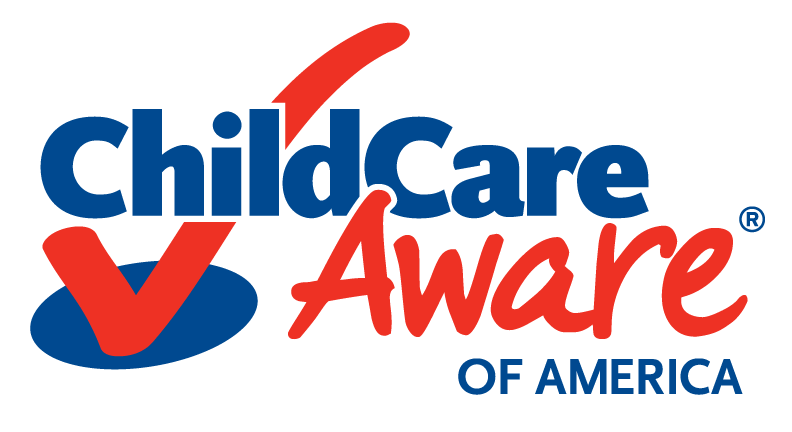

Since the CARES Act was enacted in April 2020, two additional federal relief packages have been passed by Congress that include significant increases in emergency funding for child care: the Coronavirus Response and Relief Supplemental Appropriations (CRRSA) Act of 2021 and the American Rescue Plan (ARP) Act. These funds began to flow to states during the spring with the intention to get funds out the door and provide relief to providers and families as quickly as possible. While we are still a year away from the first deadlines for states to obligate some funds, it’s important for advocates to monitor state progress to ensure funds are distributed efficiently and equitably. So far, state progress has varied greatly.
This blog provides an update on how states plan to use these funds, lessons learned on grant distribution, and how child care resources and referral (CCR&Rs) agencies are engaged in the implementation process.
Coronavirus Response and Relief Supplemental Appropriations (CRRSA)
Nearly $10 billion in supplemental Child Care and Development Fund (CCDF) funding was made available under CRRSA in December 2020. These funds were intended to prevent, prepare for, and respond to COVID-19 and must be obligated by September 30, 2022. State and tribal lead agencies must notify the Administration for Children and Families (ACF) by April 1, 2022, if they are unable to obligate any part of their funds by September 30, 2022.
Under CRRSA, all states, territories, and tribes were required to submit a report describing how funds would be spent, though states were not required to strictly adhere to it and could make changes to its plans without notifying ACF. As of July 2021, it is not uncommon for states, like Indiana, Kansas and Texas, to still be spending down CRRSA funds to support initiatives such as essential worker scholarships, sustainability grants for child care providers and expanded family eligibility for subsidy assistance.
American Rescue Plan (ARP) Act
In April 2020, the ARP Act allocated $39 billion in dedicated child care relief funding to states. This funding is broken down into two distinct streams. Nearly $24 billion must be spent in the form of stabilization grants to help existing programs remain open or reopen. The remaining $15 billion is provided through supplemental Child Care and Development Fund (CCDF) discretionary funding to support allowable CCDF activities that help make child care more affordable and accessible for families. For a side-by-side comparison of both funding streams, see this state-by-state breakdown.
Outside of the $39 billion, there was also a separate $3.55 billion permanent increase to the mandatory child care entitlement to states. For more information about the timeline of the ARP Act funds and allowable uses, check out Child Care Aware ® of America’s (CCAoA) American Rescue Plan Act Resource Hub.
Stabilization Grants ($24 billion): ACF is updating this stabilization grant map regularly to include grant application information in each state. As of mid-August, just eleven states and one territory have uploaded an application for their stabilization grant funds with the aim of providing financial relief to child care providers in the wake of COVID-19. Of these ten, Maryland already closed its stabilization grant application process in early August. Though Louisiana has indicated it will provide at least two application rounds, its first application was open for only a period of two weeks. Connecticut has a live application with a much longer timeframe of accepting submissions through the end of September. In the first few weeks of its grant application process, New York has over 8,600 applications approved and has paid out its first $60 million.
There will likely be more movement from states announcing their stabilization grant applications throughout the fall, like in Oregon, which has announced that providers can expect to apply for additional funding in mid-September.
Supplemental CCDF Discretionary Funding ($15 billion): States have also started to make announcements on how they will use the other stream of funding under the ARP Act, the supplemental CCDF discretionary funding. These funds may be used to support any activities allowable under the Child Care & Development Block Grant Act (CCDBG) and CCDF regulations and are not restricted to responding to COVID-19. This has included but is not limited to raising eligibility thresholds, increasing compensation and benefits for providers, improving provider payment policies, and eliminating family copays. For more information, CCAoA has a list of policy recommendations for states to consider when determining how to best use federal relief dollars to support long-term change.
In Nebraska, state legislation was signed to increase the income eligibility threshold for subsidized child care from 130% to 185% FPL, through October 2023. Kentucky will use ARP Act funds to provide technology system upgrades to connect all child care data systems and provide additional start-up grants for family child care homes. Maine has announced it will use these funds to support its Child Care Plan for Maine to help the state’s child care system recover and improve child care quality, accessibility, and affordability over the long-term. This includes waiving family fees and licensing fees, providing a 35 percent increase to providers who accept subsidies and serve children with special needs, basing reimbursements on enrollment, and providing stipends to support wages and benefits for providers. Virginia is using these funds to waive family copays through December 2021.
New Mexico is planning for bold, transformative change with its ARP Act funds. The state announced that as of August, ARP Act funds will support moving income eligibility for families from 200 percent of federal poverty level to 350 percent of poverty level, making it the state with the highest income eligibility for child care assistance. The state will also fully shift away from basing provider reimbursements on market-rate surveys and instead will use a new cost-estimation model based on the cost of providing high-quality care. While the federal relief funds will only support these policies for two years, the state has expressed confidence that a November 2022 ballot initiative to increase the state’s withdrawals from a land grant fund will sustain these policies in the future.
Best Practices for Equitable, Efficient, and Transparent Funding
There have been several best practices states and CCR&Rs have implemented to gather feedback about grant usage, raise awareness of the relief grants, distribute funds, and collect data in an equitable, efficient, and transparent way. New Hampshire released an ARP Act Idea Input Survey to gather feedback on how the state should prioritize funding to strengthen the state’s child care industry. The lead state agency is holding weekly virtual office hours to answer any questions about the ARP Act grants throughout the month of August and plans to provide other ways to gather input over the life of the grant. West Virginia held forums across six CCR&R regions for parents, providers, and stakeholders to collect public insight to help guide expenditures for the ARP Act. Maryland’s lead state agency planned to hold three virtual town halls to discuss the needs of the child care community and how best to allocate this historic investment, along with the ability to submit written comments.
New York released a “Coming Soon!” announcement flyer to give providers a heads up before its stabilization grant application was released. Other intermediaries have asked if they could test applications out first to make sure they’re easy for providers to fill out. Minnesota and Illinois have created transparency about grant allocation by collecting data and sharing an analysis of who received funding.
As the eyes and ears of America’s child care system, CCR&Rs are ideal partners to help states and local municipalities with relief grant implementation, as many already have with previous rounds of relief funding. Illinois, Minnesota, Maryland, New Hampshire and New York CCR&Rs are playing a role in the stabilization grant implementation, including providing trainings for providers and technical assistance, creating the application and portal, cutting and mailing checks, recipient reporting, and working on provider appeals.
The Illinois Network of Child Care Resource and Referral Agencies (INCCRRA) has been instrumental in helping with moving federal relief grants to providers. The agency has been tapped to help with application and attestation, recipient reporting, provider appeals, and cutting and mailing thousands of checks. INCCRRA has a dedicated website and a call center to help providers with grants and has provided webinars in English and in Spanish. To make applications a little easier, Illinois has prepopulated basic information, like names and addresses, on the applications that are then sent directly to the provider.
Child Care Aware® of Kansas has been an essential partner in getting grants out to providers throughout the entire pandemic. They prioritized strengthening their grants assistance team to help ensure grants are allocated in an equitable and efficient way by hiring bilingual staff to help with grant applications and using regionally placed grant navigators to provide one-on-one assistance through email, virtual meetings, or by phone. Grant applications have been made available in English and Spanish and can also be translated into other languages as needed. Online applications were mobile-friendly so providers could fill them out using cell phones. Child Care Aware of Kansas® also started a lending library system where tablets were mailed to providers to complete applications. Since the state has areas without broadband access, paper applications were also made available.
These states and CCR&Rs offer examples of applying best practices in grant application development, gathering feedback, outreach, funding distribution, and data collection to ensure the granting process is equitable, efficient, and transparent. For more ideas on how you can ensure the same happens in your state, check out CCAoA’s Relief Funding Best Practices: Checklist for Child Care Advocates.
Are you working to support the implementation of ARP Act funds and need technical assistance or support? Contact us at takeaction@usa.childcareaware.org.
{{cta(‘863826d4-3c8c-4d16-a751-8984e65862b4’)}}


